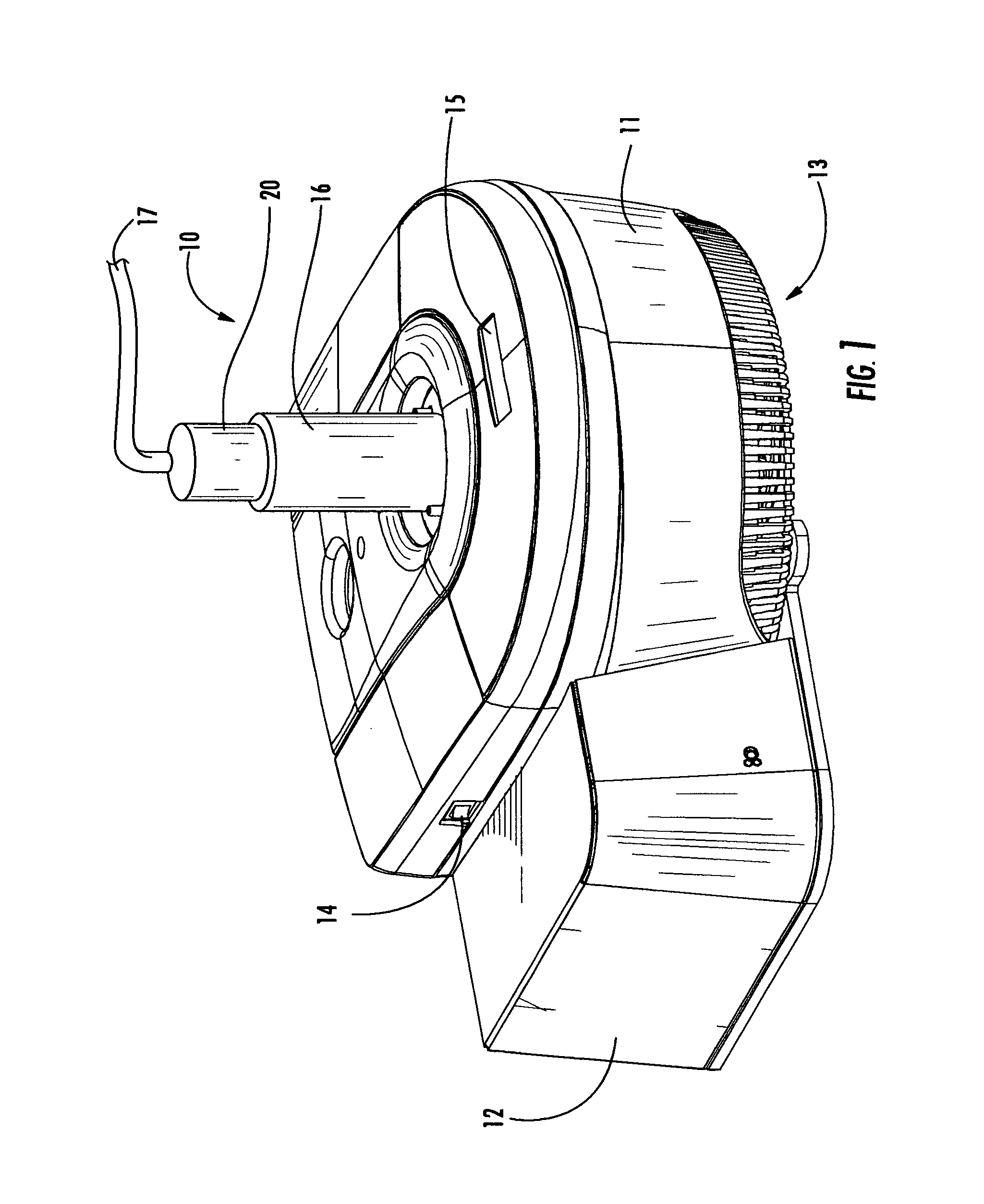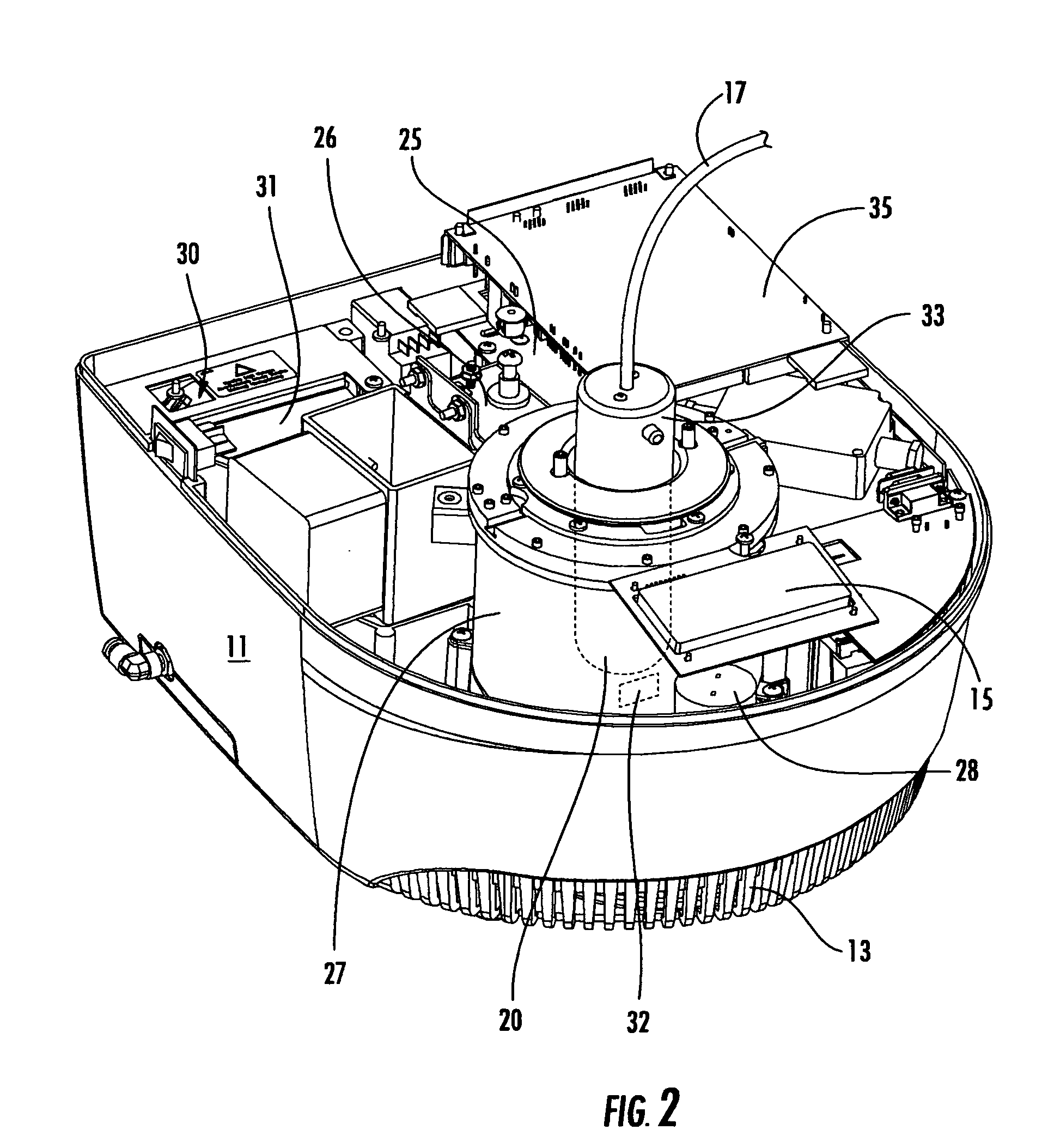Spectroscopy-based real-time control for microwave-assisted chemistry
a spectroscopy and real-time control technology, applied in the field of microwave-assisted chemistry, can solve the problems of glass, uv/vis and ir spectroscopy, and the inability to measure certain reaction parameters, and achieve the effect of less attractive uv and ir spectroscopy, and potentially useless effects
- Summary
- Abstract
- Description
- Claims
- Application Information
AI Technical Summary
Benefits of technology
Problems solved by technology
Method used
Image
Examples
Embodiment Construction
[0033]In a first embodiment, the invention is an instrument 10 (FIG. 1) for performing microwave-assisted chemical synthesis. The instrument 10 includes a microwave apparatus housing 11 and a Raman detector housing 12, typically made of rugged plastic or metal. The housings 11,12 protect internal components described herein. At least one of the housings 11,12 is vented with slotted apertures 13 to facilitate cooling of internal components. FIG. 1 further illustrates other general features of the instrument 10, such as a power switch 14, a status display 15, and a microwave-transparent reaction vessel 20. The reaction vessel 20 is surrounded by an attenuator 16 and may be fed using a feed tube 17. The attenuator 16 prevents microwave energy from escaping the vessel 20.
[0034]FIG. 2 is a partial perspective view of the microwave apparatus housing 11 and various internal components therein. Briefly, FIG. 2 illustrates a microwave source 25, a waveguide 26, a microwave cavity 27, a stir ...
PUM
 Login to View More
Login to View More Abstract
Description
Claims
Application Information
 Login to View More
Login to View More - R&D
- Intellectual Property
- Life Sciences
- Materials
- Tech Scout
- Unparalleled Data Quality
- Higher Quality Content
- 60% Fewer Hallucinations
Browse by: Latest US Patents, China's latest patents, Technical Efficacy Thesaurus, Application Domain, Technology Topic, Popular Technical Reports.
© 2025 PatSnap. All rights reserved.Legal|Privacy policy|Modern Slavery Act Transparency Statement|Sitemap|About US| Contact US: help@patsnap.com



